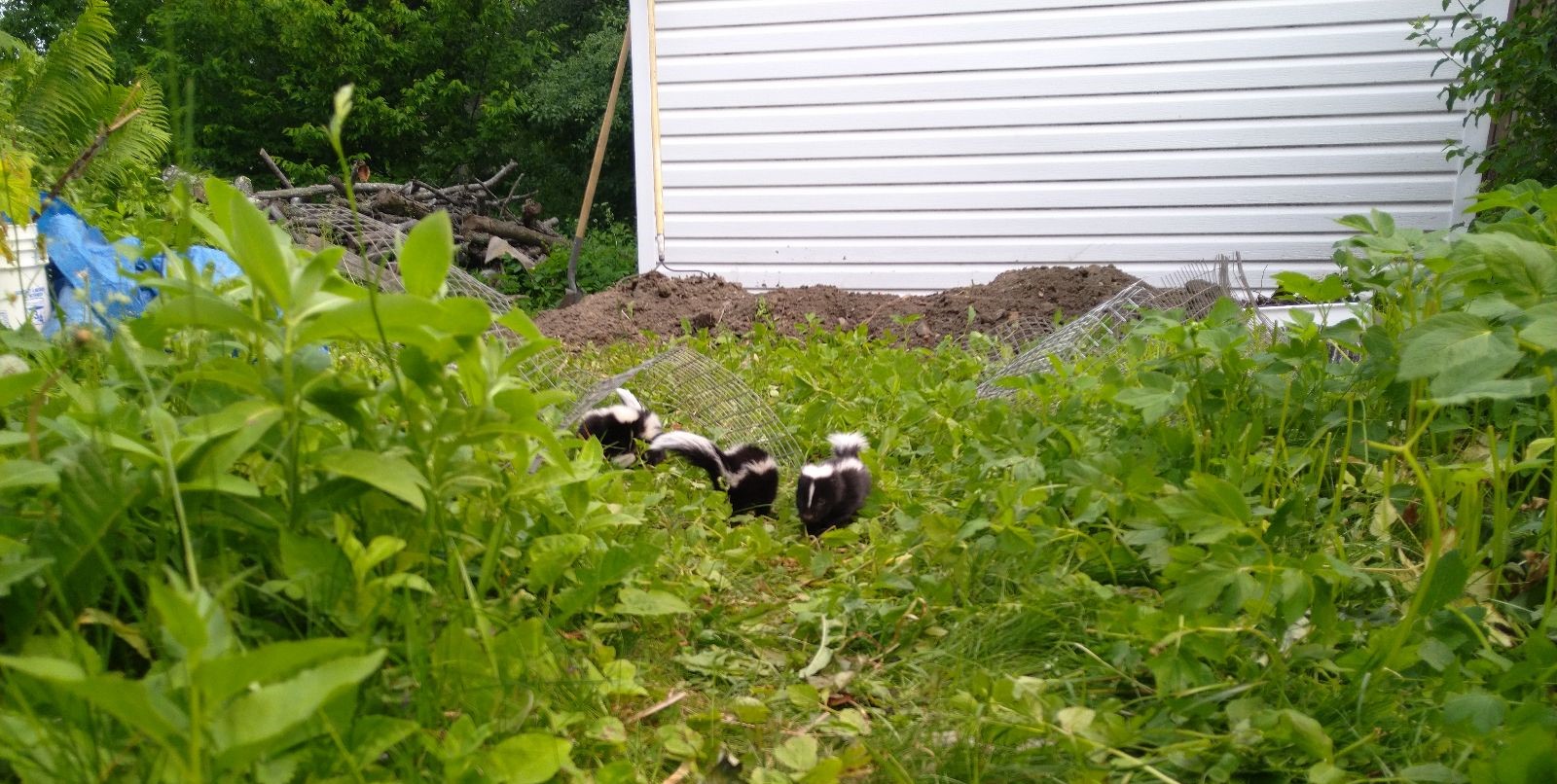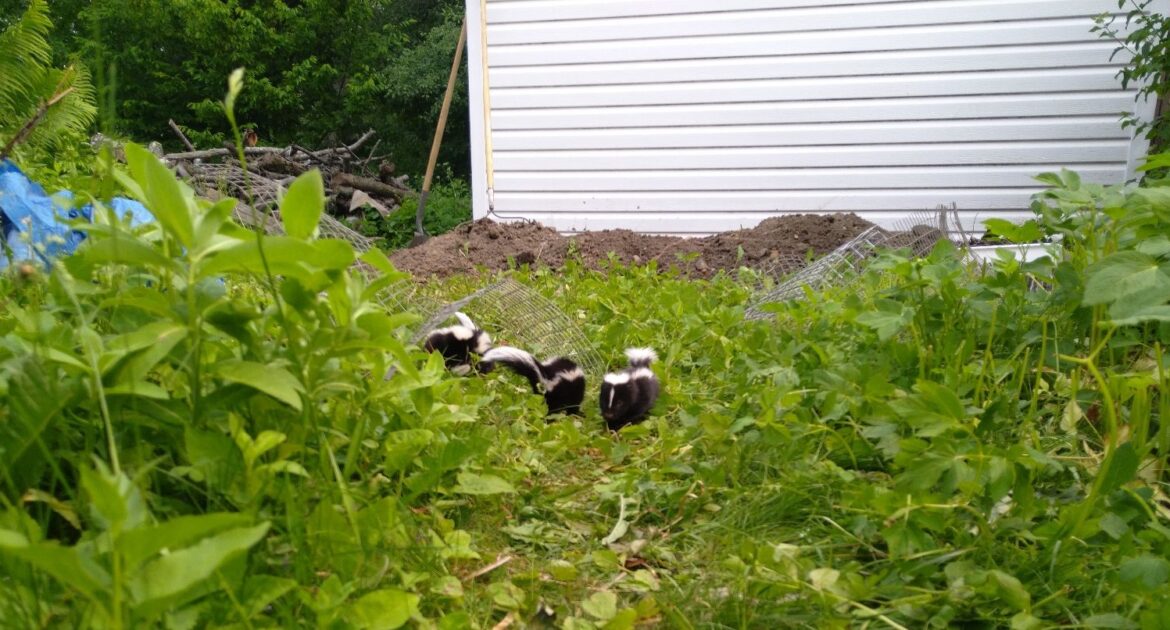If you’ve noticed a strong skunk smell around your home, it’s time to act quickly. That unpleasant odour could mean skunks have made themselves at home nearby, or worse, under your property. Aside from the smell, skunks can cause serious damage by digging or nesting. Addressing the issue as soon as possible is essential to protect your home and keep your family comfortable.
While it might be tempting to mask the smell or handle the problem on your own, the best approach is to call in professionals like Skedaddle Humane Wildlife Control in Toronto. Their team provides expert wildlife removal services and proven methods for tackling skunk odour effectively. Acting fast and relying on experts ensures your home is free from the lingering smell and that skunks can’t return.
Here we break down skunk odour removal tips while protecting your property and preventing future problems.
Locate the Source of the Skunk Smell
The first step in tackling skunk odour is figuring out where it’s coming from. Skunks tend to hide in dark, quiet, and sheltered locations, which makes certain areas of your property prime real estate for them. Check the following spots:
- Under Decks and Porches: Skunks frequently dig or nest under these raised structures, taking advantage of the cover they provide.
- Crawl Spaces and Basements: If the odour is particularly strong inside your home, a skunk may have found its way into your crawl space or basement.
- Shrubs and Nearby Greenery: Dense bushes and hidden garden corners are other common places where skunks might hide.
Skunks are also drawn to areas with food sources, so if you suspect one, check any unsecured garbage bins, compost piles, or fallen fruit in your yard. Once you’ve identified where the smell is strongest, keep people and pets clear of the area to avoid agitating the animal.
Calling in wildlife professionals at this stage is essential. Skedaddle Humane Wildlife Control can assess the situation, confirm the location of the skunks, and get started on addressing the problem.
Call the Experts
Dealing with skunks on your property is not as simple as getting rid of the smell. The source of the odour, the skunk itself, must be safely removed. The best way to do this is by reaching out to professionals like Skedaddle Humane Wildlife Control.
Our team uses humane techniques to encourage the skunks to leave, including one-way doors. These doors allow the animals to exit their hiding spots but prevent them from coming back inside. This method is safe for both you and the wildlife, ensuring the issue is resolved while protecting the animal.
Attempting to remove a skunk yourself can result in additional challenges, including the risk of getting sprayed. Trusting experienced wildlife professionals is the most effective and safest option.
Secure Your Property
Once skunks are removed, it’s important to ensure they don’t return. Skunks are resourceful and can easily find weak spots in your home or yard to nest again. Here are the key steps to secure your property:
Closing Off Entry Points
One of the first things to do is seal up any openings that skunks might use to get onto your property or into your home’s structure. Skunks love dark, quiet spaces to nest, such as under porches, decks, and sheds. These areas are especially inviting if they’re open or easy to dig into.
To fix this, use barriers like sturdy wire mesh or boards to block off these spots. The materials need to extend into the ground by at least 20-30 centimetres because skunks are excellent diggers. They’ll often burrow to get past a simple surface-level barrier.
If you’ve had skunks on your property before, check for signs of damage they may have caused, such as chewed wood or dug-out holes. Fix these areas as soon as possible to prevent other wildlife from following their example. Professionals can assist by not only sealing these openings but also ensuring the remaining structure is secure and safe from future intrusions.
Using Tight-Fitting Garbage Can Lids
Garbage cans can be like an all-you-can-eat buffet for skunks. They’re drawn to food scraps and leftovers, so properly securing your trash is one of the simplest yet most effective ways to keep these animals away.
Use garbage cans with tight-fitting lids that lock or seal in place. If your lids are loose, skunks can easily tip the bin over or pop the top off to get inside. Consider weightier bins or strap-style closures for added security, especially if skunks have already been sniffing around your garbage area.
Keep your trash bins stored indoors, like in a shed or garage, if possible. This adds an extra layer of protection. Also, avoid leaving garbage bags outside overnight, as this can attract not only skunks but also raccoons and other wildlife.
Removing Food Sources from Your Yard
Skunks are opportunistic eaters. Beyond your trash, they’re also drawn to other food sources commonly found in yards. Fallen fruit, garden scraps, and pet food bowls left outside can all act as a dinner bell for skunks and other wildlife.
If you have fruit trees, be sure to pick up any fallen fruit immediately. Leaving it on the ground is an open invitation for skunks to wander onto your property. Similarly, remove any uneaten pet food after meals, and avoid leaving bowls out overnight. Pet food can attract not just skunks but also raccoons, squirrels, and even rats.
For gardeners, compost heaps are another thing to watch for. If you compost your kitchen scraps, make sure your compost pile is contained and covered tightly. You don’t want skunks rummaging through it for hidden treats. Tidying up and removing these food sources not only helps deter skunks but also discourages other types of wildlife from visiting your property.
Prevent Future Skunk Problems
Once skunks have been removed and access points sealed, additional measures can help prevent these animals from returning to your property. Skunks are attracted to places that offer food, water, and shelter, so keeping your space less inviting can make a big difference.
Here’s what you can do to stay ahead of future issues with skunks:
- Keep Yards Well-Maintained: Trim overgrown bushes, mow the lawn regularly, and avoid the accumulation of debris or wood piles, which are attractive nesting spots for skunks.
- Install Motion-Activated Lights or Sprinklers: Skunks are nocturnal and prefer to avoid brightly lit or active areas. These tools can make your yard less appealing to them.
- Maintain Fencing: Close any gaps or holes in fences. While skunks are not the best climbers, they are excellent at digging and can easily get through small openings along the ground.
Wildlife prevention is key to keeping your home safe and odour-free. Professionals can provide advice and services to help fortify your home against skunks and other animals.
Dealing with Skunk Odour with Expert Help!
Even after the skunks are gone, it’s possible that the odour will stick around. Skunk spray is an oily substance that can linger, especially if it’s seeped into outdoor surfaces or your home’s foundation. If the smell is inside your home, ventilate the area as much as possible and remove any fabrics that may have absorbed the odour.
For long-lasting odours, professionals can guide you on the best ways to fully eliminate the smell. Skedaddle Humane Wildlife Control’s expertise in skunk odour removal tips means you’ll be back to enjoying a fresh, clean home in no time.
If skunk odour is causing problems around your home, don’t wait to take action. Skedaddle in Toronto deal with skunks effectively and humanely. Using our professional skunk odour removal services and one-way door systems, we’ll not only remove the unwelcome visitors but also ensure your home stays protected from future infestations.
Request an estimate today and get started on making your home skunk-free. Our team is ready to assist you every step of the way.




